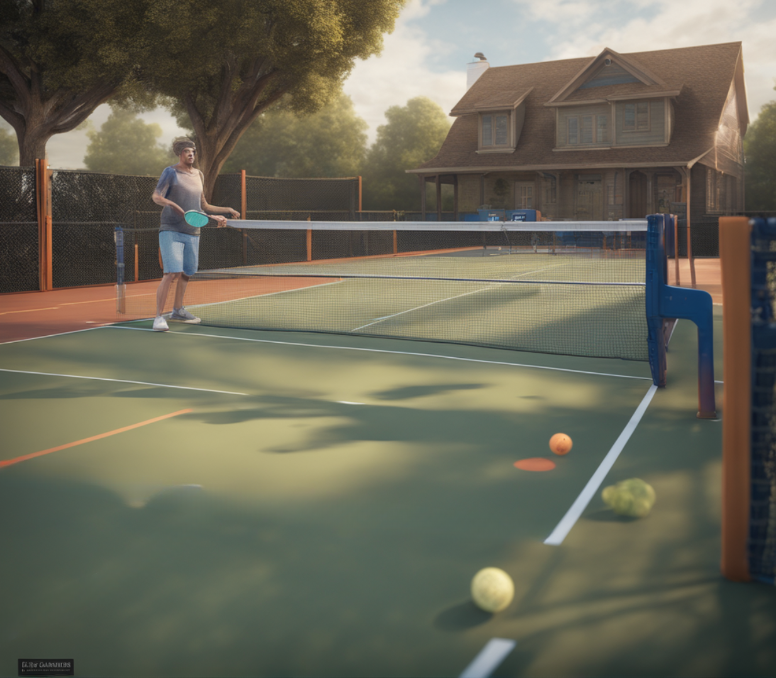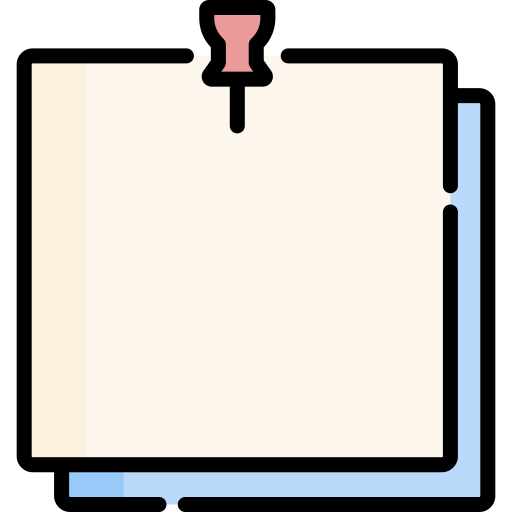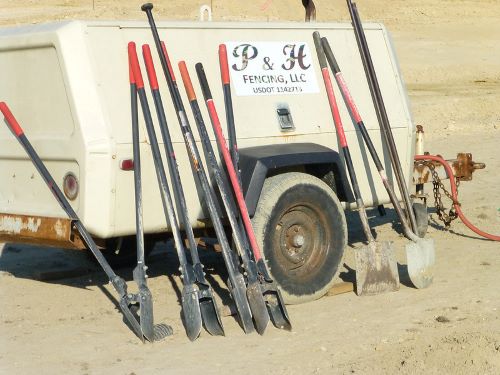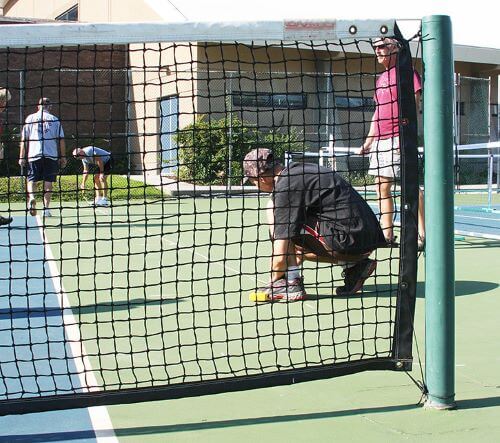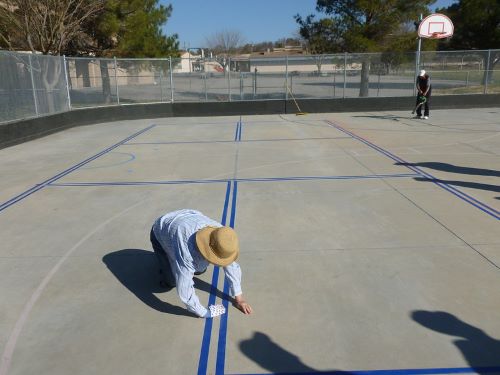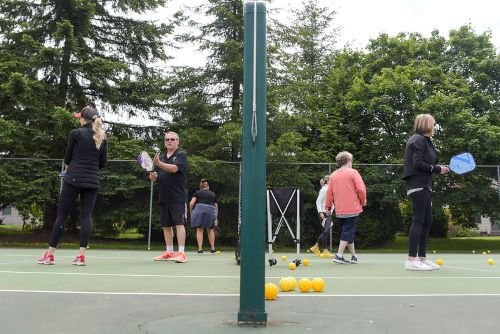How much does a pickleball court cost if you’re building one on your backyard or on your driveway? While building a pickleball court in your home isn’t impossible, it can get expensive if you don’t do the research.
Pickleball is a fun sport that families all over the world can play together. It’s active, easy to learn, and becoming increasingly popular—especially in Northern America. The best part? A pickleball court fits in most backyards and front lawns.
Let’s break down the answer to this so you can manage your expectations.
How Much Does a Pickleball Court Cost?
The cost of a pickleball court ranges anywhere between $1,000 to $35,000, depending on how much work you need to do. If you want to spare no expense, a court can cost up to $50,000 with all the lights, accessories, and everything. How much does it cost to build a pickleball court really depends on two things:
- How ‘complete’ you want your pickleball court to be.
- And, what you’re working with.
Is it indoor or outdoor? Do you live in a tropical area with really hot summers or does it snow every year? Are you trying to play pickleball professionally, or is this just a hobby that you and your family can play every week during barbecues?
Here’s my very best take at all the costs in building a pickleball court (sorted by chronological order of investment):
- $500 to $2,000 — Landscaping, flattening the ground, and compacting the soil
- Concrete or asphalt foundation
- $2,640 to $6,160 for asphalt and $4,400 to $8,800 for concrete — 44″ x 20″ court
- $3,900 to $ 9,100 for asphalt and $6,500 to $13,000 for concrete — 50″ x 26″ court
- $5,400 to $12,600 for asphalt and $9,000 to $18,000 for concrete — 60″ x 30″ court
- $1,000 to $2,500 — Drainage and irrigation
- $2,000 to $5,000 — Court surface coating
- $500 to $1,500 — Markings, lines, and net
- $1,000 to $5,000 — Lighting fixtures
- $2,000 to $5,000 — Mesh fence
So $10,900 is the bare minimum with everything and $43,600 is near the best. Also, keep in mind that the concrete or asphalt installation will be a bit more expensive, because the labor for that is separate. It takes around 100 to 200 billable hours though, so you can use that as a benchmark.
As you can see, “how much a pickleball court costs?” is a very loaded question and the answer heavily depends on the court you want to build and what you have to build off of. But don’t worry! I’m going to break down each costs of a pickleball court and we’re going to explain everything you need to know. I’ll also provide tips to help you know what to expect.
Pickleball Court Full Dimensions
The dimensions for a pickleball court are 44 feet long by 20 feet wide. This is the edge to edge measurement of the entire playable surface. However, the USA Pickleball Association (the official organization for pickleball) recommends 60 feet by 30 feet for the dimensions. The extra space is for the:
- benches
- avoiding accidents
- where the referee stays
- serving area behind the baseline
- walking space
You can adjust this a little depending on the space you have available and if you’re willing to have a tighter-feeling court. If you’re working with limited space, strive for a court that is at least 50 feet long and 26 feet wide. This way, there’s three feet of space after every edge of the court where players or the audience can walk around without interrupting the game.
Based on my experience and from talking with other pickleball players who have courts at home, the full 60 by 30 feet isn’t necessary.
Pickleball Court Installation and Construction Cost
Building the concrete floor and walls of your pickleball court is usually the biggest bill. Second to this is the pickleball court surface coating that’s applied over the concrete floor to make it softer and impact-resistant. This improves traction and grip, and will make the pickleball bounce more consistently.
We have a whole article about pickleball court surfaces. For me, if you plan on using your court for more than 5 years, then there’s no reason to skimp on surface coating. It’s cheaper to maintain than repairing concrete, it protects your knees while playing, makes the pickleball bounce much more consistent, and more. Read my article on it for the full picture.
Site Preparation for a Pickleball Court
This step involves clearing and assessing the area, evaluating and leveling the surface, marking out the court dimensions, and so on. This part generally costs between $500 to $2,000 depending on how much work needs to be done.
Loose soil will easily crack and damage your court from underneath if you don’t compact it first. And, if your area is covered in grass, you might not realize just how uneven the ground can be.
Concrete or Asphalt Installation
Depending on the climate of the area where the pickleball court is being constructed, different types of concrete may be recommended.
- Concrete — $5 to $10 per square foot
- Asphalt — $3 to $7 per square foot
Asphalt is a type of pavement that has a shorter lifespan than concrete and is more susceptible to cracking and damage.
Concrete is a mixture of cement, water, and aggregate. It’s more difficult to install but has a longer lifespan than asphalt, so it’s less susceptible to cracking and damage.
For regions that experience snowfall, freeze-thaw-resistant concrete or air-entrained concrete is often used to prevent damage from freezing and thawing cycles. In areas with hot summers, concrete with a higher resistance to heat and temperature fluctuations is better to minimize the risk of cracking and other surface issues.
Find a professional contractor in your area, or an expert in pickleball court installation, who can provide guidance on concrete installation and recommend the best surface protection coating based on your pickleball court’s needs.
Drainage and Irrigation
Do pickleball courts have drainage? No, but your backyard or front yard is going to need better drainage now that you’ve replaced thousands of square feet of what used to be grass into concrete. If you don’t do install proper drainage and irrigation, you’ll run the risk of flooding during hard rains. While little floods don’t really affect or destroy the concrete and court altogether, you’re going to have a bad time cleaning off the mud from your court every time it rains.
This will cost between $1,000 to $2,500, but we suggest putting it off until after your court surface dries. Observe how your area behaves when it rains hard. If it floods, I suggest you get a proper drainage then.
Court Surface Installation and Finishing Touches
After the concrete is installed, surface coating is applied to ensure the longevity and performance of the pickleball court. This takes between 2 to 3 days and will cost you around $2,000 to $5,000 depending on the package you get and the supplier you choose.
Court surfaces installation isn’t just paint, it’s also an acrylic surface coating on top. Some packages even offer cushions in between the base layer of concrete and the acrylic surface coating on top.
Pickleball Court Equipment and Accessories Cost
Thankfully, we’re starting to get cheaper. These are the equipment and accessories you’ll be needing for your pickleball court:
Pickleball Net
You can get a portable pickleball net for as low as $50 to $100. However, higher-quality nets that can stand harsh weathers will be more expensive, at around $100 to $500.
In case you aren’t familiar, pickleball net heights should be 36 inches at the sides and 34 inches towards the center. So don’t be surprised if it starts to sag when you’re done installing your net.
Markings and Lines
You can get the markings done professionally for between $250 to $600, but if you’re a handy person then you can also do this yourself. Just be ready to put in the work in making everything accurate and straight, because it will be very obvious if a white line is crooked or not.
Clear and visible court markings are necessary to define the boundaries and playing areas. Sidewalk chalk can be used as a cost-effective option for marking lines initially, but acrylic paint is recommended for a more permanent fixture.
Lighting Situation
Proper lighting is crucial for pickleball courts, especially if you only have time to play in the evening. I highly suggest that you don’t skimp out on this. If your lights are a little bit dark or not bright enough, you will have a hard time seeing the ball and may even get headaches trying to play. This will set you back $1,000 to $5,000 depending on how well-lit you want your court to be.
Here’s a short reminder of what to keep an eye on
-
Use LED Floodlights and High-Intensity Discharge (HID) Lights
LED lights are energy-efficient, have a longer lifespan, and provide excellent illumination. HID lights are also utilized but may require more maintenance and have a higher energy consumption.
-
Ensure Proper Placement and Uniformity of Lighting Fixtures
You need to avoid shadows and dark spots on the court. Place the lights in such a way as to provide even lighting throughout the court, but also minimal glare. Glare is distracting and can be disadvantageous to players.
Mesh Fence for Pickleball Court
A mesh fence is probably the most unnecessary component in this list, but it’s one of the best things you can add to your court to improve your quality of life. Not having to run around to get the ball after someone smashes it 20 feet away is a blessing, especially if you get and start to feel competitive while playing.
You’ll get set back $2,000 to $5,000 for a mesh fence, but you can also use nets for a cheaper, DIY alternative.
Often Overlooked Equipment and Accessories
The common equipment and accessories mentioned above are essential, but there are a few that are often overlooked. These items can also enhance the playing experience and safety on the court, though they aren’t completely necessary:
-
Ball Retriever
This useful accessory collects stray pickleball during practices or games. You will have an easier time picking up balls and keeping your court tidy. This is especially handy for the elderly.
-
Windscreen
Strong wind can disrupt the movement of the ball and make it more unpredictable. In areas with windy conditions, a windscreen can be installed around the court to reduce the impact of the wind and create a more controlled playing environment.
-
Court Maintenance Tools
Tools such as court sweepers, line cleaners, and court resurfacing kits are essential for proper court maintenance. A clean court with well-maintained, clear lines ensures a safe playing experience.
Pickleball Court Maintenance
Building a pickleball court is expensive. To ensure its longevity and safety, you’ll need to do regular maintenance.
Maintenance Process and Cost
The cost of maintaining a pickleball court will vary based on court size, surface type, frequency of use, and the extent of maintenance required.
Regular cleaning, line touch-ups, and minor repairs generally cost a few hundred dollars to around $1,000 a year. However, more significant repairs such as surface coating reapplication may set you back several thousand, even tens of thousands of dollars.
Courts that are not maintained properly will damage easily, look bad, and deteriorate faster. Here’s how to maintain them:
-
Regular Cleaning
Regularly keep the court clean and free from obstructions. Sweep or use a leaf blower to remove debris like leaves, and dirt.
-
Line Touch-ups
Periodically refresh the court lines using paint or chalk to keep the boundaries visible and accurate.
-
Surface Repair
Promptly address cracks, uneven areas, or signs of wear on the court surface to prevent further damage.
-
Resurfacing
Over time, resurfacing may be necessary to address significant cracks, damage, or wear to the court. This involves applying a new layer of coating or acrylic surface.
Lifespan of A Pickleball Court
A well-maintained pickleball court can last between 8 to 15 years. Factors such as construction quality, maintenance practices, and usage patterns can influence the court’s lifespan.
Here are the signs that your court is “dead” or unplayable:
- The surface coating is non-existent and the rough concrete is exposed.
- There are cracks and deformities that influence how the pickleball bounces.
- The light fixtures or metal windscreens are deteriorating.
Extending the Life of A Pickleball Court
To prolong the life of a pickleball court and minimize the need for resurfacing and other costly repairs, you’ll need to clean the pickleball court once or twice a week, touch-up lines once or twice a year, recoat the court’s surface every four to eight years, and promptly repair any cracks or uneven areas when they appear.
Here are other ways to extend the life of your pickleball court:
- Proper Usage: Encourage players to use appropriate footwear, and avoid actions that could cause surface wear.
- Weather Protection: Consider protective measures such as wind barriers, sunshades, or covers in areas with extreme weather conditions.
- Professional Inspection: Periodically have a professional inspect the court to identify maintenance needs and underlying issues.
By implementing regular maintenance practices and taking proactive measures, pickleball court owners can maximize the court’s lifespan, ensuring a safe and enjoyable playing experience for all for many years to come.
Key Considerations for Indoor Pickleball Court
Indoor and outdoor pickleball courts are not made equal.
Indoor courts are much more expensive than outdoor courts because the court is inside a building. You have the walls and roof to consider, on top of making sure that your indoor court follows the building code of your local government. Indoor courts also need:
- proper ventilation such as air conditioning and heaters, depending on the weather
- sufficient lighting so you can play at any time of the day
- good acoustics so that sound doesn’t bounce around and cause echoes
Though expensive, the benefits of having an indoor court are that the cleaning is easier, and the court stays in good condition longer—as long as it’s carefully maintained.
Key Considerations for Outdoor Pickleball Court
Outdoor courts are much more susceptible to temperature changes and debris, so your concrete base should be strong enough to withstand all these problems. Using the right concrete spells the difference between cracks after several months, and cracks after years.
This same problem also applies to the pickleball surface coating that you’ll pick. Find one that’s marked for outdoor courts.
Other things to consider are:
- fencing off the area to keep the ball and players within the playing field
- adding a windscreen to minimize the effect of the wind
Needless to say, you’ll need to regularly clean outdoor courts more often than indoor courts. You don’t have to clean it weekly if it’s too much work, but definitely clean your court before every game. Debris is slippery and can cause accidents. The little rocks and sticks that you step on and press into the court will also ruin the surface coatings quicker.
How to Make Pickleball Court Costs Cheaper
The best way to cheapen your costs when making a pickleball court is to first assess whether or not you need a court at all. Is it cheaper and more efficient to rent a place every time you play, or to play in your own court?
Also, do you have lots of space in your backyard? Better, a large area that’s already covered in concrete? If so, then maybe all you need is a net, some chalk, and proper lighting.
Evaluate what you already have and need to buy versus what’s available elsewhere. If you need to travel an hour a day to get to a court, you might benefit from having a court of your own. But if you have easy access to a nearby court, complete with all the necessary equipment, make use of it. It’s a great way to meet other players, too!


